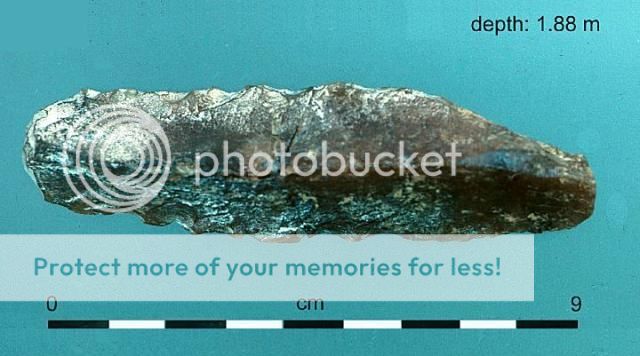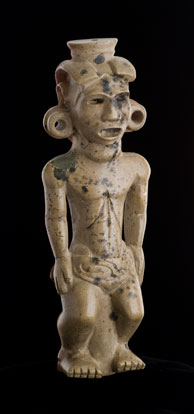It looks like you're using an Ad Blocker.
Please white-list or disable AboveTopSecret.com in your ad-blocking tool.
Thank you.
Some features of ATS will be disabled while you continue to use an ad-blocker.
share:
reply to post by Hanslune
Nice!! I remember reading somewhere that some Amerindian tribes in Washington state and surrounding areas have very similar genes to East Asians, such as Japanese or Eastern Chinese.
I love this thread.
Nice!! I remember reading somewhere that some Amerindian tribes in Washington state and surrounding areas have very similar genes to East Asians, such as Japanese or Eastern Chinese.
I love this thread.
Originally posted by kimish
reply to post by punkinworks10
It's Solutrean and it was found on the Eastern Coast of the United States. Meaning that Europeans had reach N.America much sooner than previously thought.
ETA: looking at the picture of the area, I'm guessing Chile and the artifacts are pre-clovis.edit on 8-5-2013 by kimish because: (no reason given)
Good guess Kimish,
But no,
You have to go way farther back than soultreans, or neanderthals.
So the first one is the "master hand axe"
On the second part you are right is the new world, but not that far south.
Originally posted by Hanslune
reply to post by kimish
Unfortunately it remains un-accepted by the consensus - at best it can be considered controversal, neither proven or completely rejected.
Meltzer is among those still skeptical of the Solutrean hypothesis, citing the scant evidence. “If Solutrean boat people washed up on our shores, they suffered cultural amnesia, genetic amnesia, dental amnesia, linguistic amnesia and skeletal amnesia. Basically, all of the signals are pointing to Asia” as the origin of the first Americans.
I believe the image being shown is not the cinmar blade that is something different. I believe it is a hand axe (its isn't a Soultrean blade),from Kathu Pan in the Northern Cape, SA dated back to 750,000 years
------------------------------------------------
Calico geofacts
------------------------------------------------
Punkin well done on the pots!
edit on 8/5/13 by Hanslune because: (no reason given)
Ding ding,
Hans is the winner.
Yes that us the master hand axe from Africa.
And yes those other hand axes are from the calico early man site in the deserts of California.
And the reason they are significant and controversial because they date to 200k years old.
Really, 200k years?
Originally posted by punkinworks10
Hay, Hans
Where is that giant pile if pots
Umm El-Qaab
Pre-dynastic tombs
lots of sherds
4 meters plus of sherds covering 8-9 acres I believe
reply to post by punkinworks10
and as far as anyone can tell they are geofacts unless somebody make sixty thousand stone tools and left them in the same area.....
---------------------------------------------------------
Hint for the cauldron, well okay that is a hint
Plus..... this item caused quite a stir in archaeological circles when it was found - it was the first of it kind located in the region in which it was recovered.
and as far as anyone can tell they are geofacts unless somebody make sixty thousand stone tools and left them in the same area.....
---------------------------------------------------------
Hint for the cauldron, well okay that is a hint
Plus..... this item caused quite a stir in archaeological circles when it was found - it was the first of it kind located in the region in which it was recovered.
reply to post by Hanslune
Was the cauldron used to make certain types of medicines/drugs or to boil people to death as a punishment?
Was the cauldron used to make certain types of medicines/drugs or to boil people to death as a punishment?
reply to post by Hanslune
This is a time we will have agree to disagree,
I have read the literature, that's available, and the counter arguments are flawed at best, and outright fallicous at worst.
One has to ask how does a stream bed
Make these,

Or these

Here's an awsome discussion on the site.
www.archaeologyfieldwork.com...
What sealed the deal for me is one of these specimens,not sure which, is made from chert that is only found
300 miles away in Colorado,
That's pretty hard to explain by stream action
This is a time we will have agree to disagree,
I have read the literature, that's available, and the counter arguments are flawed at best, and outright fallicous at worst.
One has to ask how does a stream bed
Make these,

Or these

Blade tool or side scraper
Same as the dorsal view in the preceding figure, but a clearer portrayal of the sharp, evenly-spaced removal scars on the blade laterals. Lateral retouch is bifacial. D. Griffin photo.
Here's an awsome discussion on the site.
www.archaeologyfieldwork.com...
What sealed the deal for me is one of these specimens,not sure which, is made from chert that is only found
300 miles away in Colorado,
That's pretty hard to explain by stream action
reply to post by punkinworks10
That's the problem non-cultural actions can make presentable 'tools'. Oh I 'know' Charlie Hatchett he posts on another website I go to.
The problem with the tools is one they can be reproduced by natural action, show no wear marks and there are tons of them. I believe CH and others are trying to put together a paper on wear but I haven't seen it. It is also possible that the excellent stone resources were used by the locals and their items are mixed into the matrix.
At best one can say the jury is out.
That's the problem non-cultural actions can make presentable 'tools'. Oh I 'know' Charlie Hatchett he posts on another website I go to.
The problem with the tools is one they can be reproduced by natural action, show no wear marks and there are tons of them. I believe CH and others are trying to put together a paper on wear but I haven't seen it. It is also possible that the excellent stone resources were used by the locals and their items are mixed into the matrix.
At best one can say the jury is out.
Originally posted by kimish
reply to post by Hanslune
Was the cauldron used to make certain types of medicines/drugs or to boil people to death as a punishment?
Total height is 125cm - will hold off ID for one more day to give others a chance.
reply to post by Hanslune
a Greek cauldron from late 7th Century?
Not sure where it was found, maybe at Olympia.
I first had to go on the 'fleur-de-lys' (lily) symbols, then on the griffin heads.
a Greek cauldron from late 7th Century?
Not sure where it was found, maybe at Olympia.
I first had to go on the 'fleur-de-lys' (lily) symbols, then on the griffin heads.
Originally posted by Hanslune
Originally posted by punkinworks10
Hay, Hans
Where is that giant pile if pots
Umm El-Qaab
Pre-dynastic tombs
lots of sherds
4 meters plus of sherds covering 8-9 acres I believe
Holy moly that's a lot of pottery
reply to post by Hanslune
It looks as though there are raised wing reliefs, that have an Egyptian flair to them, but the rest doesn't look Egyptian.
Mad guess here Etruscan?
It looks as though there are raised wing reliefs, that have an Egyptian flair to them, but the rest doesn't look Egyptian.
Mad guess here Etruscan?
reply to post by Hanslune
That is a bronze cauldron supported on an iron tripod from the royal necropolis of Salamis in Cyprus...8th century.
Where was this pipe discovered, and to what culture did it belong?

That is a bronze cauldron supported on an iron tripod from the royal necropolis of Salamis in Cyprus...8th century.
Where was this pipe discovered, and to what culture did it belong?

edit on 9-5-2013 by isyeye because: (no reason given)
reply to post by punkinworks10
It's cypriot,
From the town of salamis 3rd to 11th century bc, a Greek city state.
That explains the mix of Greek and Egyptian motifs.
It's cypriot,
From the town of salamis 3rd to 11th century bc, a Greek city state.
That explains the mix of Greek and Egyptian motifs.
The impressive bronzecauldrononthe metallictripod, fromthe book“Salamis ofCyprus” byDr.VasosKarageorghis
reply to post by isyeye
It's a pipe from the Adena People, or Early Woodlands People.
Found in a grave in Ohio.
Dating back to 500 BCE – 50 CE
It's a pipe from the Adena People, or Early Woodlands People.
Found in a grave in Ohio.
Dating back to 500 BCE – 50 CE
new topics
-
Intro once again
Introductions: 40 minutes ago -
University student disciplined after saying veganism is wrong and gender fluidity is stupid
Education and Media: 1 hours ago -
Geddy Lee in Conversation with Alex Lifeson - My Effin’ Life
People: 2 hours ago -
God lived as a Devil Dog.
Short Stories: 3 hours ago -
Police clash with St George’s Day protesters at central London rally
Social Issues and Civil Unrest: 4 hours ago -
TLDR post about ATS and why I love it and hope we all stay together somewhere
General Chit Chat: 5 hours ago -
Hate makes for strange bedfellows
US Political Madness: 7 hours ago -
Who guards the guards
US Political Madness: 10 hours ago
top topics
-
Hate makes for strange bedfellows
US Political Madness: 7 hours ago, 15 flags -
Who guards the guards
US Political Madness: 10 hours ago, 13 flags -
whistleblower Captain Bill Uhouse on the Kingman UFO recovery
Aliens and UFOs: 17 hours ago, 12 flags -
Police clash with St George’s Day protesters at central London rally
Social Issues and Civil Unrest: 4 hours ago, 8 flags -
TLDR post about ATS and why I love it and hope we all stay together somewhere
General Chit Chat: 5 hours ago, 5 flags -
University student disciplined after saying veganism is wrong and gender fluidity is stupid
Education and Media: 1 hours ago, 4 flags -
Has Tesla manipulated data logs to cover up auto pilot crash?
Automotive Discussion: 12 hours ago, 2 flags -
God lived as a Devil Dog.
Short Stories: 3 hours ago, 2 flags -
Geddy Lee in Conversation with Alex Lifeson - My Effin’ Life
People: 2 hours ago, 2 flags -
Intro once again
Introductions: 40 minutes ago, 2 flags
active topics
-
Intro once again
Introductions • 1 • : Encia22 -
Terrifying Encounters With The Black Eyed Kids
Paranormal Studies • 61 • : Consvoli -
Hate makes for strange bedfellows
US Political Madness • 33 • : DBCowboy -
Breaking Baltimore, ship brings down bridge, mass casualties
Other Current Events • 466 • : IndieA -
Remember These Attacks When President Trump 2.0 Retribution-Justice Commences.
2024 Elections • 45 • : TzarChasm -
-@TH3WH17ERABB17- -Q- ---TIME TO SHOW THE WORLD--- -Part- --44--
Dissecting Disinformation • 627 • : fringeofthefringe -
University student disciplined after saying veganism is wrong and gender fluidity is stupid
Education and Media • 8 • : matafuchs -
My wife just had a very powerful prophetic dream - massive war in Israel...
The Gray Area • 13 • : BukkaWukka -
Mandela Effect - It Happened to Me!
The Gray Area • 114 • : ArMaP -
Silent Moments --In Memory of Beloved Member TDDA
Short Stories • 69 • : Naftalin
